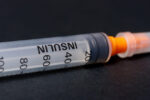A new report from the Brennan Center for Justice and the National Institute on Money in State Politics finds that judicial integrity is increasingly under threat. A torrent of special interest money, often from secretive sources, is flooding into state judicial elections, and West Virginia is no exception. The report is the only comprehensive look at all state supreme court elections in the latest cycle, 2015-16.
According to the report, spending on TV ads reached record levels in six states including West Virginia. In 2016, a five-way contest for one seat on the state Supreme Court attracted nearly $3 million in outside spending, including over $2 million from the Republican State Leadership Committee’s Judicial Fairness Initiative. The race saw ad spending of $4.2 million, and was third in spending nationally after Pennsylvania and North Carolina.
Attorney Beth Walker, who benefitted from the Judicial Fairness Initiative effort, defeated incumbent Justice Brent Benjamin, ex-state legislator William “Bill” Woo-ton, attorney Wayne King, and former state Attorney General Darrell McGraw Jr. Both Benjamin and Wooton participated in the state’s public financing system but were significantly outspent by outside groups.
Here’s a more detailed look at the troubling new trends identified by the report:
- An unprecedented surge in dark money from secret sources in state supreme court elections – only 18 percent of outside spending in these elections could be categorized as fully transparent. While dark money spending had already become a major force in Congressional elections, this is the first time there is clear evidence that the same trend is impacting judicial elections.
- More million-dollar races – 27 justices were elected in races where campaign spending exceeded $1 million, compared to a previous record of 19. More than half of all states with elected high courts have now had justices involved in races that cost more than $1 million.
- Record-breaking outside spending – election expenditures made by interest groups, rather than campaign committees or political parties, comprised 40 percent of all spending in state supreme court elections in 2015-16, compared to just 29 percent in the previous cycle. Total outside spending by groups was a record $27.8 million.
- Attacks on judicial decisions in television ads are increasingly becoming the norm – more than half of all negative ads aired during the 2015-16 cycle criticized judges for their rulings on the bench, often misleadingly.
The report provides a thorough review of these and other trends, including examples of what big spenders hope to achieve, the kinds of ads they fund, and the threats posed to the appearance and reality of evenhanded justice.
Thirty-eight states now hold elections for their supreme courts; 33 states held elections in 2015-16, the period covered by Who Pays for Judicial Races?: The Politics of Judicial Elections 2015-16.







